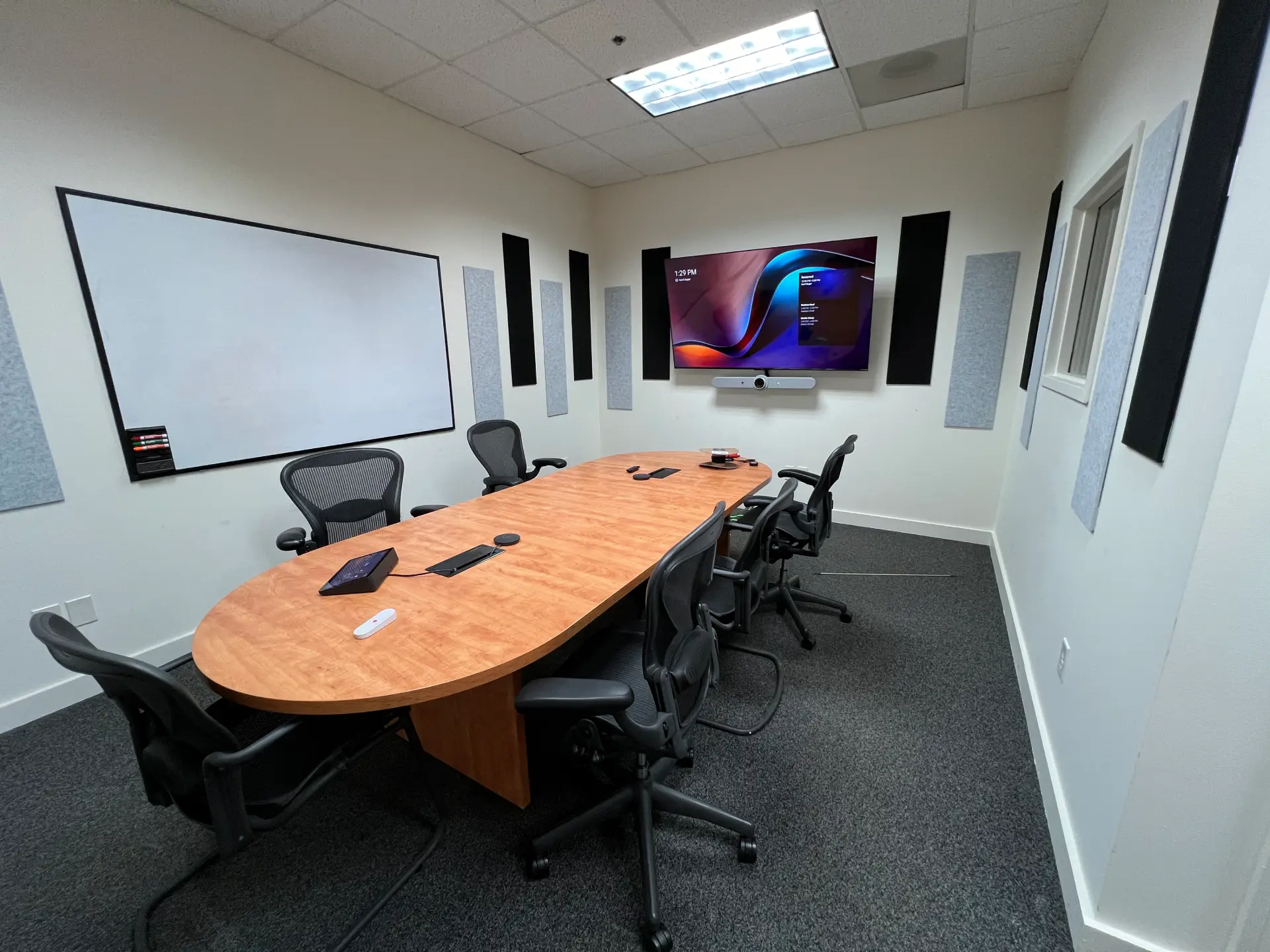
Uneven sound coverage frustrates everyone in the room. The front rows hear fine while those in the back strain to catch every word. One side is uncomfortably loud while the other barely registers. Often, these problems come down to a single critical factor: speaker placement and spacing.
The good news is that getting it right doesn't require guesswork or complex calculations. While every room presents unique challenges, proven guidelines can help you achieve clarity and balance throughout your space. In this post, you'll learn what affects speaker distance, practical spacing rules to start with, common mistakes that undermine coverage, and how different room types demand different approaches.
Understand What Affects Speaker Placement
Before jumping to exact measurements, it's important to understand what shapes the way sound travels in a room:
- Room size and shape: Large, wide rooms require more speakers spread evenly, while smaller rooms may only need two well-placed units.
- Ceiling height: High ceilings create more reflected sound and can impact how far sound waves carry.
- Room acoustics: Hard materials like glass, concrete, and wood reflect sound and create echo, while soft materials like carpeting and upholstered seating provide absorption.
- Audience layout and seating position: Rows of chairs in a classroom or church differ from flexible seating in a multipurpose room.
- Rear wall placement: Speakers placed too close to a rear wall can create boundary interference, impacting frequency response.
By keeping these variables in mind, you'll be better equipped to apply spacing guidelines effectively.
.webp)
General Guidelines for Speaker Spacing
So, how far apart should speakers be? Think of speaker coverage like overlapping flashlight beams in a dark room. Each beam has a bright center and dimmer edges. The goal is spacing those beams so the dimmer edges just overlap—too close creates blinding bright spots, too far leaves gaps in darkness.
While there's no one-size-fits-all answer, here are some practical starting points:
- Maintain even coverage: Speakers should be spaced so their coverage areas just overlap, avoiding large gaps or excessive overlap that causes muddiness.
- Avoid extremes: Don't place speakers closer than about 6–8 feet apart in smaller rooms, or more than 20 feet apart without additional reinforcement.
- Think about the listening position: The ideal sweet spot is where sound from each speaker arrives at the same time and level, producing balanced stereo imaging.
- Initial placement matters: Start with symmetrical spacing between front speakers and adjust based on how sound waves interact in the room.
- Match distance to the audience area: Cover the listeners evenly rather than just filling the whole room with volume.
These rules of thumb won't replace professional tuning, but they provide a useful foundation.
Common Mistakes to Avoid
Even well-intentioned setups can run into issues. Watch out for these common errors:
- Speakers too close together: This creates interference and echo-like effects.
- Speakers too far apart: Causes dead zones where people can't hear clearly.
- Incorrect aiming: Pointing front speakers straight at walls or ceilings instead of toward the listening area wastes sound energy and creates unwanted reflections.
- Ignoring room modes: Low-frequency build-up in certain areas can make bass uneven, depending on where speakers and seating positions are located.
- Using only one speaker in a large space: Leads to "hot spots" near the speaker and poor coverage elsewhere.
Avoiding these pitfalls keeps your sound clearer and more consistent.
Different Room Types, Different Needs
Every type of room presents its own spacing puzzle, and the goal is always to adapt speaker placement to the environment:
- Training rooms and classrooms: Smaller learning spaces benefit from close speaker spacing that prioritizes speech clarity, often using ceiling speakers or wall-mounted units to reach every listening position.
- Auditoriums: Large seating areas with sloped floors require distributed front speakers and sometimes line arrays to maintain consistent sound from front to back.
- Community centers and multipurpose halls: Flexible seating and room layouts mean floor standing speakers or in-wall speakers can be repositioned or configured to handle a variety of events.
- Municipal buildings and council chambers: These spaces demand precision placement of front speakers, rear speakers, and center speakers so that voices carry evenly without overwhelming the room's acoustics.
By highlighting the unique acoustics and audience layouts of these environments, you can move beyond generic spacing rules and create solutions that fit the purpose of each space.

Technology That Supports Balanced Coverage
Speaker spacing is just one part of the equation. Modern audio equipment helps refine the results:
- Line array speakers: Designed for large venues, they provide controlled coverage across long distances.
- Digital signal processors (DSPs): These tools adjust sound in real time, minimizing feedback and balancing frequency response.
- Subwoofers and low-frequency management: Particularly important in music-heavy spaces, ensuring bass frequencies are distributed evenly.
- Acoustic treatment: Wall panels, ceiling baffles, and other materials reduce unwanted sound reflections and improve clarity.
- Speaker stands and mounting options: Using speaker stands for stereo speakers or positioning floor standing speakers properly can significantly improve coverage.
When combined with thoughtful speaker placement, these tools can elevate a good setup into a professional one.
Create a Space with Consistent Sound
Proper speaker spacing is key to delivering clear, balanced sound that keeps audiences engaged—whether in small meeting rooms, training spaces, or large performance venues. The guidelines in this post give you a strong starting point, but the best results come from tailoring speaker distance, separation, and technology to your unique space. Done right, you create a listening experience that feels natural, no matter where someone is seated.
Our team at RYGID AV specializes in designing systems that deliver balanced sound coverage every time. Contact us today to learn how we can help you create a space where every word and note is heard clearly.
Where to Contact + Connect with RYGID AV
Mooresville, NC 28117

.webp)